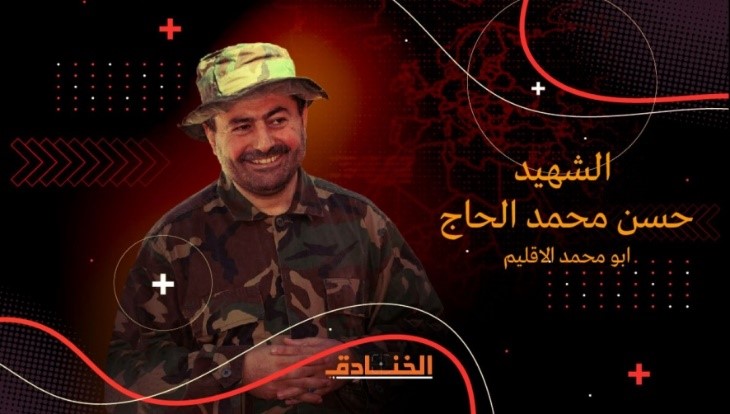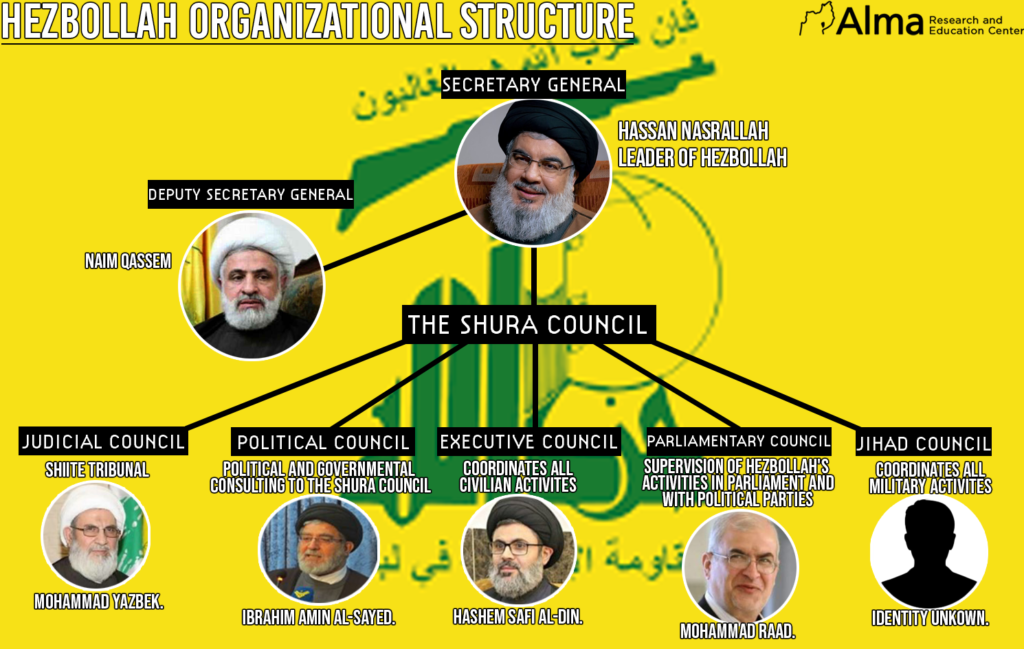*This article is part of a series of articles dealing with the structure of Hezbollah in general with the various councils and the executive council on its various civilian entities in particular (see introduction here)
The Jihad Council is responsible for Hezbollah’s military and security activities and is subordinate to the Shura Council. The Jihad Council consists of senior Hezbollah military figures, and its role is to supervise, coordinate and decide on new activities, both ongoing and special actions. The Council is also responsible for the actions of all civilian bodies belonging to Hezbollah, related to military aspects or those that may interface with them.
The Council is under the direct supervision of Nasrallah. Imad Mughniyeh served as head of the Council until his death (February 2008), and Mustafa Badr al-Din replaced him until his own death (May 2016). Currently, it is not clear who is in charge of the Council. Members of the Jihad Council are believed to be Hashem Safi al-Din (head of the Executive Council), the organization’s military chief (possibly Ibrahim Aqil), head of the organization’s security unit, and another representative from the Shura Council.
The Jihad Council works in direct coordination with the Iranians, and, likely, an Iranian representative occasionally participates in its gatherings. The following figures might also be members of the Jihad Council: Fouad Shukur, Nasrallah’s military advisor. Ali Karaki, in charge of Hezbollah’s military operations in southern Lebanon. Former member of Parliament Muhammad Haydar, responsible for the military networks operating for Hezbollah outside Lebanon and who was close to Imad Mughniyeh. Talal Hamiyah, commander of unit 910 Hezbollah’s “External Security Organization” (ESO – Hezbollah’s foreign operations arm). All under American sanctions.
The Jihad Council is, in fact, responsible for all Hezbollah military and security units operating inside and outside Lebanon. The regular units operating in Lebanon are:
The “Nasser” unit operates in the western geographical sector from the border with Israel to the Litani River.
The “Bader” unit operates in the western geographical sector north of the Litani River to Sidon.

The “Aziz” unit operates in the eastern sector, from the border with Israel in the south to the western Bakaa area in the north. One of the unit’s commanders was Hassan Muhammad al-Hajj who was killed in Syria in October 2015. The “Haider” unit operates in the area of the center of the Bekaa, the city of Belbach, and north of El Harmel.
The special units are Radwan and al-Kayim. These are Hezbollah’s elite units that serve as a kind of commando unit. One of their main missions is to infiltrate Israeli territory and occupy territories from the Galilee region. The attack tunnels unveiled in December 2018 were to be used by these units for this mission. The security unit is responsible for general security and operations security (exposure of espionage, exposing information leaks, moral offenses, etc.) and the special and compartmentalized units operating outside Lebanon, such as unit 133, , and unit 3800.
Unit 133 is responsible for conducting operations within Israeli territory and the Palestinian Authority through collaborators among Israeli and Palestinian Arabs. The unit is also responsible for recruiting Palestinians living in Lebanon to carry out military missions and also operates in Eastern Europe for the purpose of gathering intelligence and carrying out activities against Israeli targets. Unit 3800 is responsible for training Shiite militias outside Lebanon: in Syria, Iraq and Yemen.







